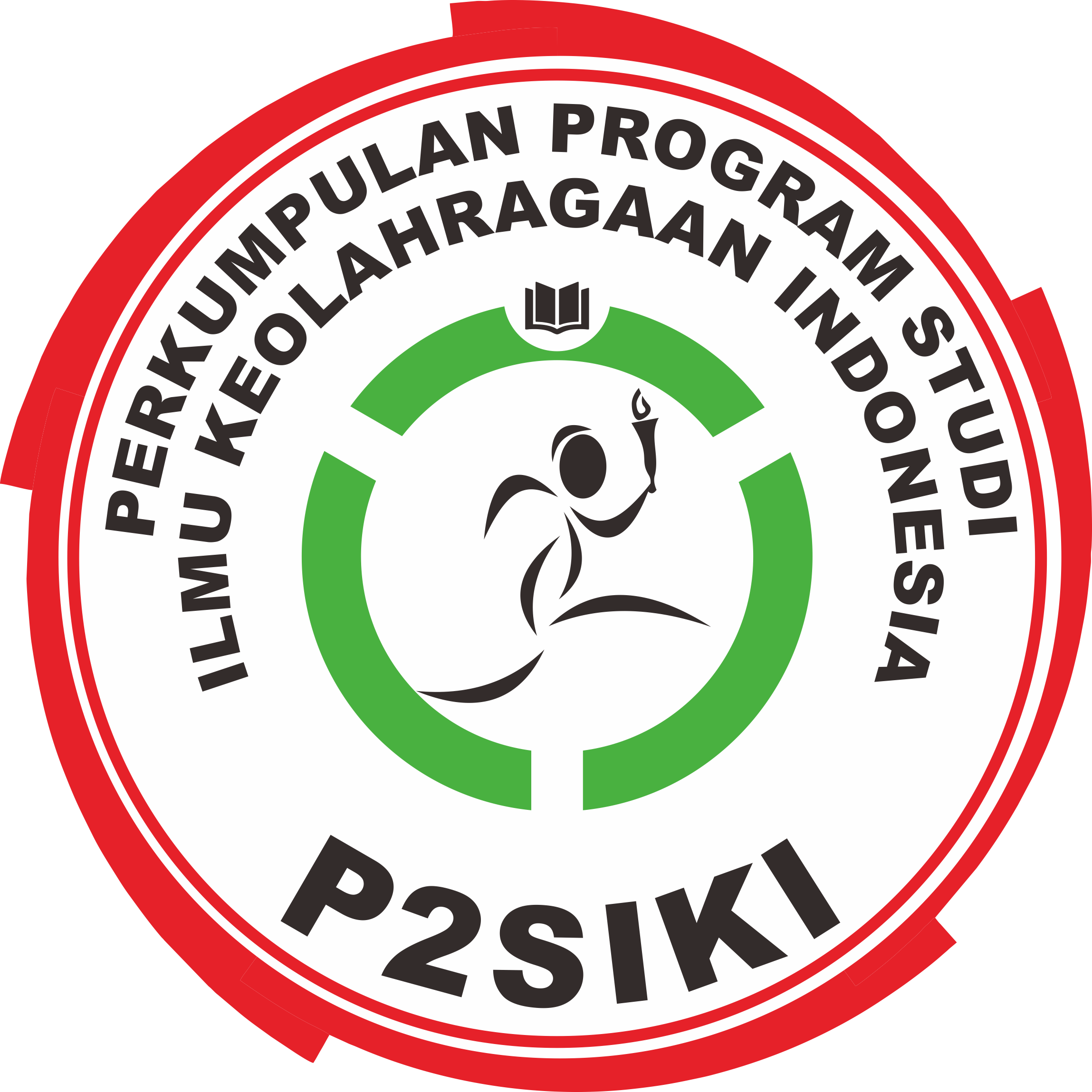Pengaruh Latihan Jump To Box, Front Box Jump, dan Depth Jump Terhadap Peningkatan Explosive Power Otot Tungkai dan Kecepatan
(1) Universitas Negeri Surabaya
(2) Universitas Negeri Surabaya, Indonesia
(3) Universitas Negeri Surabaya, Indonesia
Abstract
Kondisi fisik merupakan salah satu faktor penting untuk diperhatikan dalam setiap cabang olahraga untuk mencapai prestasi tertinggi. Tujuan mempersiapkan fisik dalam latihan adalah meningkatkan komponen biomotor ke standar yang paling tinggi. Kemampuan biomotor explosive power dan kecepatan merupakan komponen penting yang diperlukan disetiap cabang olahraga. Latihan plyometric seperti jump to box, front box jump dan depth jump merupakan jenis latihan yang mampu mengembangkan kemampuan bimotor tersebut. Tujuan dari penelitian ini yaitu untuk menganalisis tentang: (1) pengaruh latihan jump to box terhadap explosive power, (2) pengaruh latihan jump to box terhadap kecepatan, (3) pengaruh latihan front box jump terhadap explosive power, (4) pengaruh latihan front box jump terhadap kecepatan, (5) pengaruh latihan depth jump terhadap explosive power, (6) pengaruh latihan depth jump terhadap kecepatan, (7) perbedaan pengaruh latihan jump to box, front box jump dan depth jump terhadap explosive power, (8) perbedaan pengaruh latihan jump to box, front box jump dan depth jump terhadap kecepatan. Jenis penelitian ini adalah kuantitatif dengan metode eksperimen semu (quasi experiment). Rancangan penelitian ini menggunakan matching only design, analisis data menggunakan uji-t dan ANOVA. Proses pengambilan data pretest dan posttest dilakukan dengan pengukuran berat badan dan vertical jump untuk mengukur explosive power, kemudian dilakukan pengukuran lari cepat 30 meter untuk mengukur kecepatan.Hasil analisis data diperoleh data rata-rata antara pretest dan posttest masing-masing kelompok yaitu: (a) Kelompok eksperimen I untuk explosive power = 14,470 watt, sig.= 0,029 dan kecepatan = 0,035 m/second, sig = 0,001. (b) Kelompok eksperimen II untuk explosive power = 14,153 watt, sig.= 0,002 dan kecepatan = 0,035 m/second, sig = 0,000. (c) Kelompok eksperimen III untuk explosive power = 19,113 watt, sig.= 0,002 dan kecepatan = 0,048 m/second, sig = 0,000. (d) Kelompok kontrol untuk explosive power = 4,757 watt, sig.= 0,000 dan kecepatan = 0,020 m/second, sig = 0,003. Sedangkan perbedaan pengaruh antar kelompok memiliki sig. 0,040 pada explosive power sedangkan sig. 0,001 pada kecepatan. Simpulan hasil penelitian, terdapat pengaruh signifikan latihan jump to box, front box jump dan depth jump terhadap explosive power otot tungkai dan kecepatan. Terdapat perbedaan pengaruh yang signifikan antara latihan jump to box, front box jump dan depth jump terhadap explosive power otot tungkai dan kecepatan. Latihan depth jump lebih baik dari latihan jump to box dan front box jump.
The physical condition is one important factor to consider in any sport to achieve the highest achievement. Interest physically prepare the exercise is to improve biomotor components to the highest standards. Biomotor ability explosive power and speed are essential components required in every sport. Plyometric exercises such as jump to box, front box jump and depth jump is a type of exercise that develops the ability bimotor. The purpose of this study is to analyze about: (1) the effects of exercise jump to box against explosive power, (2) the effects of exercise jump to box against speed, (3) the effects of exercise front box jumps on explosive power, (4) the effects of exercise front box jumps to the speed, (5) the effect exercise depth jump against explosive power, (6) the effect of exercise depth jump to the speed, (7) differences in the effects of exercise jump to box, front box jump and depth jump on explosive power, (8) differences in the effects of exercise jump to box, front box jump and depth jump to the speed. This research is a quantitative with quasi-experimental. The research design uses matching only design, data analysis using t-test and ANOVA. The process of data collection is done with a pretest and posttest weight measurements and to measure vertical jump explosive power, then measuring sprinting 30 meters to measure speed. The results of data analysis using SPSS version 20 on average between pretest and posttest each group, namely: (a) The experimental group I for explosive power = 14,470 watts, sig. = 0.029 and speed = 0,035 m / second, sig = 0.001. (b) The experimental group II for explosive power = 14,153 watts, sig. = 0.002 and velocity = 0.035 m / second, sig = 0.000. (c) The experimental group III for explosive power = 19,113 watts, sig. = 0.002 and velocity = 0.048 m / second, sig = 0.000. (d) The control group for explosive power = 4,757 watt, sig. = 0.000 and speed = 0,020 m / second, sig = 0.003. While the difference between the influence of the group had sig. 0.040 on explosive power while sig. 0.001 at speed. Conclusion The results of the study, that (1) There is a significant effect of exercise jump to box, front box jump and depth jump of leg muscle explosive power and speed. (2) There is a significant difference between the exercise jump to box, front box jump and depth jump of leg muscle explosive power and speed.Exercise depth jump better than exercise jump to box and front box jump.
Keywords
Full Text:
PDFReferences
Abd, Mohamed, & Elsayed, Mawgoud. (2012). ”Effect of Plyometric Training on Specific Physical Abilities in Long Jump Athletes”. World Journal of Sport Sciences. ISSN:2078-4724. Vol. 2,Issue 07. Pp 105-108.
Admoko. (2014). Pengaruh Latihan Depth Jump dan Counter-Movement Jump Terhadap Kelincahan dan Daya Ledak Otot Tungkai (Tesis Magister pendidikan tidak dipublikasikan) Universitas Negeri Surabaya.
Ambarukmi, Dwi H. (2007). Pelatihan Fisik Level I. Jakarta: Asdep Pengembangan Tenaga dan Pembinaan Keolahragaan Deputi Bidang Peningkatan Prestasi dan IPTEK Olahraga Kementerian Negara Pemuda dan Olahraga
Baro, Mantu., & Sonowal, Ainu. (2014). ”Effect of Selected Plyometric Exercise on Explosive Strength, Speed, and Agility”. International Journal of Science and Research. ISSN: 2319-7064. Vol. 3. Issue 8, August 2014.
Bompa, T.O., & Buzzichelli, Carlo. (2015). Periodization training for sports (Third Edition). United States of America: Human Kinetic.
Bompa, T.O., & Haff, G.G. (2009). Periodezation Theory and Methodology of Training. United States of America. Human Kinetics.
Candra. (2014). Perbedaan Pelatihan Plyometric Depth Jump dan Hurdle Jump Menggunakan Interval 1:3 dan 1:5 Terhadap Peningkatan Daya Ledak Otot Tungkai (Tesis Magister pendidikan tidak dipublikasikan) Universitas Negeri Surabaya.
Chu, D, A., & Myer, G, D. (2013). Plyometrics. United States of America. Human Kinetics.
Jatrzebski, Z., Wnorowski, K., Mikolajewski, R., Jaskulska, E., & Radziminski, Lukasz. (2014). “The Effect of a 6-week plyometric training on explosive power in volleyball players”. Baltic Journal of Health and Physical Activity. Vol.6, No. 2, 79-89.
Jojimmy: Jenis serat dan pelatihan angkat beban. Diperoleh pada Januari 1, 2015 dari http://jojimmy.net/2014/02/23/health-muscle-building/
Kumar, Raj. (2015). “ The Effect of 6 Week Plyometric Training Program on Maximal Vertical Jumping Height of Collegiate Level Soccer Players”. International Journal of Applied Research. P-ISSN: 2394-7500. E-ISSN: 2394-5869. Vol. 1. Issue 8. Pp385-289.
Kusnanik, N.W., Nasution, J. and Hartono, S. (2011). Dasar-Dasar Fisiologi Olahraga. Unesa University Press.
Maheshkumar, S., & Gladykirubakar, S. (2014).”Effect of Plyometric Exercise on Speed Among Volleyball Players”. International Journal of Scientific Research. ISSN: 2277-8179. Vol. 3. Issue 9, September 2014.
Maksum, A. (2012). Metodologi Penelitian Dalam Olahraga. Surabaya: Unipress.
Mannan, S., Johnson, P., Avulaiah, N., & Nathaniel, S., (2015).”Study on Volleyball Specific Plyometric Training on Speed Power and Agility of Male Volleyball Players”.Journal of Law, Education, Social, and Sports Studies (IJLESS). Vol. 2, Issue 3, October 2015: 226-229
Mannan, S., Johnson, P., & Verendra, N. (2015). ”Impact of Volleyball Specific Plyometric Training on Arm and Leg Explosive Power of Male Volleyball Players”.Journal of Law, Education, Social, and Sports Studies (IJLESS). Vol. 2, Issue 3, October 2015: 230-233.
McGinnis, Peter. (2013). Biomechanics of sport and exercise (Third Edition) . United States of America. Human Kinetics.
Minj, Anuranjan. (2015). ”Effect of 8 Weeks Plyometric Training on Speed of Hockey Players”. International Journal of Behavioral Social and Movement Sciences. ISSN: 2277-7547. Vol. 04. Issue 01, Jan 2015.
Mirzaei, B., Norasteh, A., Asgar, V., Eduardo, Sd., & Asadi, A. (2014). “Effects of six weeks of depth jump vs Countermovement jump training on sand On muscle soreness and performance”. Kinesiology. Issue 01. Pp. 97-108.
Muhamad, Yanuar R. (2015). Pengaruh Latihan Front Box Jump Dan Kneeling Squat Jump Terhadap Kekuatan Otot Punggung, Kekuatan Otot Tungkai, dan Power Otot Tungkai (Tesis Magister pendidikan tidak dipublikasikan) Universitas Negeri Surabaya.
Nurhasan. (2011). Menjaga Kebugaran Jasmani. Gresik Jawa Timur: Abi Pustaka
Primadinata, G.B. (2015). Perbandingan Pengaruh Latihan Plyometric Box Jump dan Front Box Jump dengan Rest Ratio 1:3 dan 1:5 terhadap Peningkatan Kecepatan dan Power Otot Tungkai (Tesis Magister pendidikan tidak dipublikasikan) Universitas Negeri Surabaya.
Ramkumar, B. (2014). ”Comparison of Explosive Power Between Male Volleyball and Basketball Players”.Journal of Physical, Fitness and Sport. ISSN: 2277: 5447. Vol. 3, March 2014
Sethu, S. (2014). ”Comparison of Plyometric Training and Ladder Training on Sprinting Speed, Vertical Explosive Power and Agility”. International Journal of Recent Research and Applied Studies. ISSN: 2349-4891. Vol. 1. Issue 1(15), June 2014.
Shah, Salvi. (2012). ”Plyometric Exercises”. International Journal of Health Sciences and Research. ISSN: 2249-9571. Vol. 2. Issue 1,April 2012.
Sukadiyanto dan Muluk, D. (2011). Pengantar Teori dan Metodologi Melatih Fisik. Bandung: Lubuk Agung.
Vassil, Karin & Bazanovk, Boris. (2011). ”Plyometric Training Program on Young Volleyball Players”. Journal of Human Sport & Exercise. ISSN: 1988-5202.
Veeramani, S. (2015). ”Effect on Package of Low Impact Plyometric Exercise on Selected Performance Related Fitness Variables Among Volleyball Players”. International Journal of Physical Education, Sport and Health. P-ISSN: 2394-1685. E-ISSN: 2394-1693. Vol. 2. Issue 01. Pp. 20-22.
Refbacks
- There are currently no refbacks.
Published by:
Department of Sport Science, Universitas Negeri Semarang
Gd. F1 Lt. 1 FIK-UNNES, Jalan Raya Sekaran Gunungpati Semarang Indonesia 50229, Telp/Fax: (024) 8508007
This work is licensed under a Creative Commons Attribution 4.0 International License.




